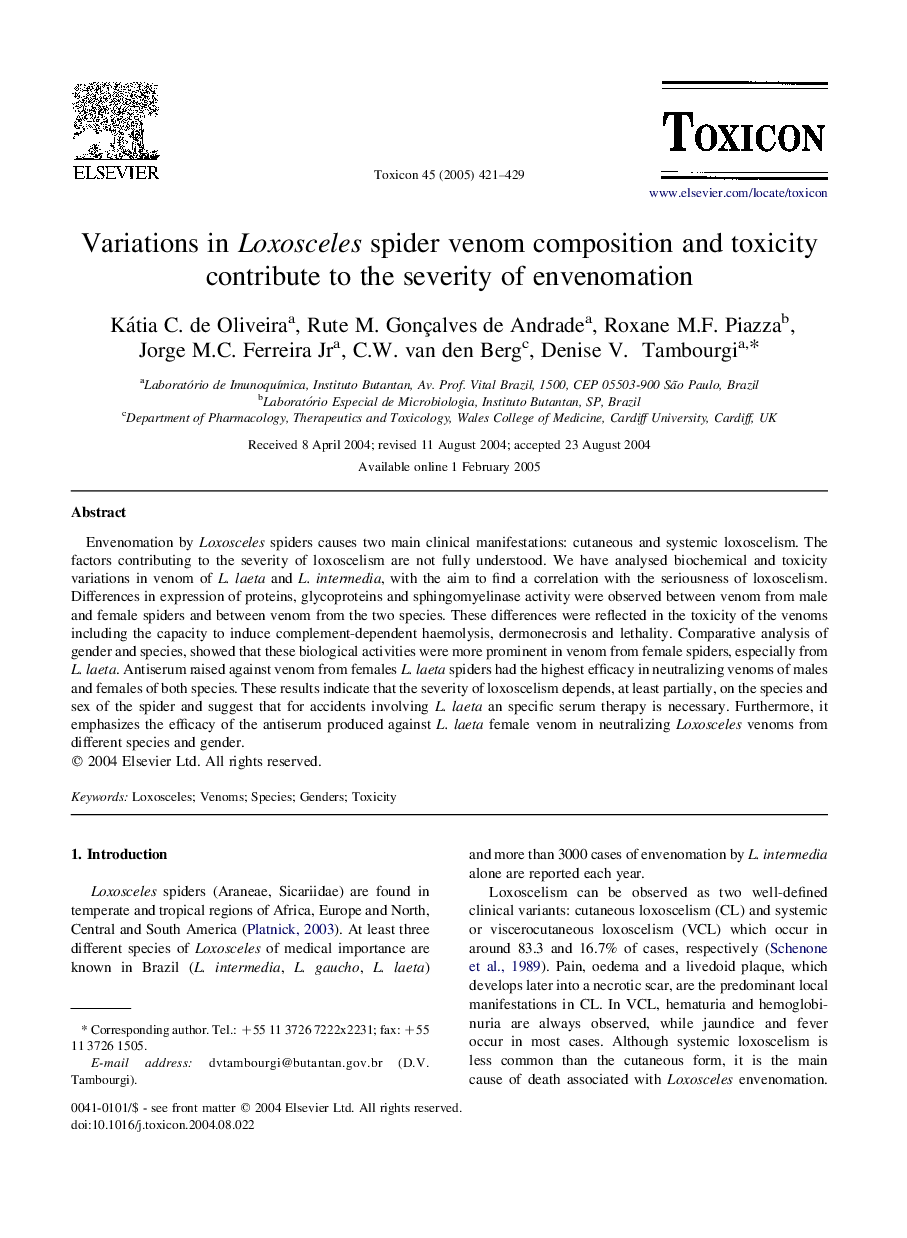| Article ID | Journal | Published Year | Pages | File Type |
|---|---|---|---|---|
| 10880271 | Toxicon | 2005 | 9 Pages |
Abstract
Envenomation by Loxosceles spiders causes two main clinical manifestations: cutaneous and systemic loxoscelism. The factors contributing to the severity of loxoscelism are not fully understood. We have analysed biochemical and toxicity variations in venom of L. laeta and L. intermedia, with the aim to find a correlation with the seriousness of loxoscelism. Differences in expression of proteins, glycoproteins and sphingomyelinase activity were observed between venom from male and female spiders and between venom from the two species. These differences were reflected in the toxicity of the venoms including the capacity to induce complement-dependent haemolysis, dermonecrosis and lethality. Comparative analysis of gender and species, showed that these biological activities were more prominent in venom from female spiders, especially from L. laeta. Antiserum raised against venom from females L. laeta spiders had the highest efficacy in neutralizing venoms of males and females of both species. These results indicate that the severity of loxoscelism depends, at least partially, on the species and sex of the spider and suggest that for accidents involving L. laeta an specific serum therapy is necessary. Furthermore, it emphasizes the efficacy of the antiserum produced against L. laeta female venom in neutralizing Loxosceles venoms from different species and gender.
Related Topics
Life Sciences
Biochemistry, Genetics and Molecular Biology
Biochemistry, Genetics and Molecular Biology (General)
Authors
Kátia C. de Oliveira, Rute M. Gonçalves de Andrade, Roxane M.F. Piazza, Jorge M.C. Jr, C.W. van den Berg, Denise V. Tambourgi,
